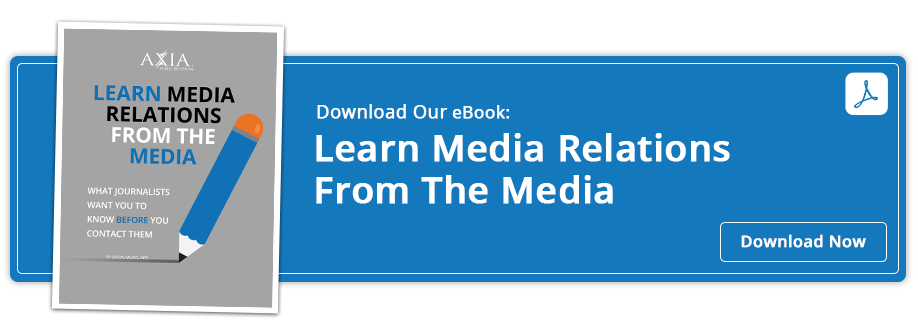Stories that affect more people are more likely to earn media coverage.
 Impact: What comes to mind when you think of this word? An asteroid impact, maybe? Something powerful — physically and emotionally? Think about the asteroid metaphor: A huge event like that would affect many people — virtually everyone on Earth. You’d want to see that in the news before it happened, right? That’s because the event is not just literally an impact. The event has impact, meaning it affects a great number of people.
Impact: What comes to mind when you think of this word? An asteroid impact, maybe? Something powerful — physically and emotionally? Think about the asteroid metaphor: A huge event like that would affect many people — virtually everyone on Earth. You’d want to see that in the news before it happened, right? That’s because the event is not just literally an impact. The event has impact, meaning it affects a great number of people.
Audio: Listen to this article.
The greater impact an event will have, the more newsworthy it is. Newsworthiness is an idea newsrooms use to decide what stories they will cover. In essence, the more people who will care about a story, the more newsworthy that story is.
News values are elements that make something newsworthy. Journalists and strategic communicators look for these when deciding which stories to cover. When you’re looking for earned media coverage, you must incorporate these news values in your media pitches if you want journalists to notice you.
Impact makes news
Impact is a great place to start when identifying newsworthiness. Some of the most powerful and eye-catching news stories cover events, people, groups, and companies and their impact on others. These stories have significant news value because people care about something that will affect their livelihood, the people they care about, and other issues they find important.
Think about what you heard or saw on the news the day Russian forces invaded Ukraine, sparking the Russia-Ukraine War. Virtually every news outlet covered this event, and many outlets continue to publish updates as the war continues. Not only would this event impact the millions of people who live in Ukraine and Russia, it would also impact people around the world as global energy prices skyrocketed and other countries responded by banning Russian imports, increasing the cost of goods. This causes physical impact (displacement, price changes), and it causes emotional impact (distress caused by the physical impact).
A truly impactful story includes both physical and emotional impact. COVID-19 is another event with both physical and emotional impact, giving it news value. You likely remember the extensive news coverage as the novel coronavirus began to spread across the globe and develop into a pandemic. The virus had deep news coverage because it affected the whole world and had a grave impact. If you look at the news now, you’re not as likely to see the number of cases when infections aren’t spiking; you’re more likely to see stories about dealing with long-term effects of the pandemic, such as long COVID-19.
Remember: News is what’s new, so newsrooms will run stories about new developments that are happening right now or that could happen in the future. This prepares news consumers for things that could soon impact them.
Finding your company’s impact
Focus on the ways your brand affects your target audience when trying to earn media coverage, like pitching stories to journalists or reaching out to a PR agency. You could ask yourself: How does my company’s service or product change the lives of our customers?
TechCrunch featured a new payment program from online storytelling platform Wattpad that impacts Wattpad’s millions of users. This program’s impact gives this story a lot of its news value — Wattpad’s most successful writers could now earn up to $25,000 in revenue, which would impact them greatly, with other writers receiving smaller earnings. The story is impactful because Wattpad is a well-known company (which taps into the “prominence” news value) and TechCrunch likely published this story because it believes its readership includes Wattpad users, as well as writers the payment program would impact.
The key to understanding impact is understanding a newsroom’s audience and making sure that aligns with your company’s target audience. This TechTimes story highlights T-Mobile’s expansion of its 5G home internet service. Because TechTimes reports largely on technological innovations, it can safely assume its readers across the country will show interest in a story about a new option for high-speed internet. With that in mind, TechTimes published the story because it would physically impact TechTimes’ consumers.
Impact has nuance, as does every news element, and the key to unpacking it is understanding your customers and what news media they consume, which can help you determine the right newsrooms to pitch to.
If you need help understanding and analyzing your target audience, Axia can help. Use our Target Audience Analysis Template to help you list your target audiences and plan content relevant to them, which you can then incorporate into your media pitches!
Photo by cottonbro
Topics: media relations, earned media, news media


Comment on This Article